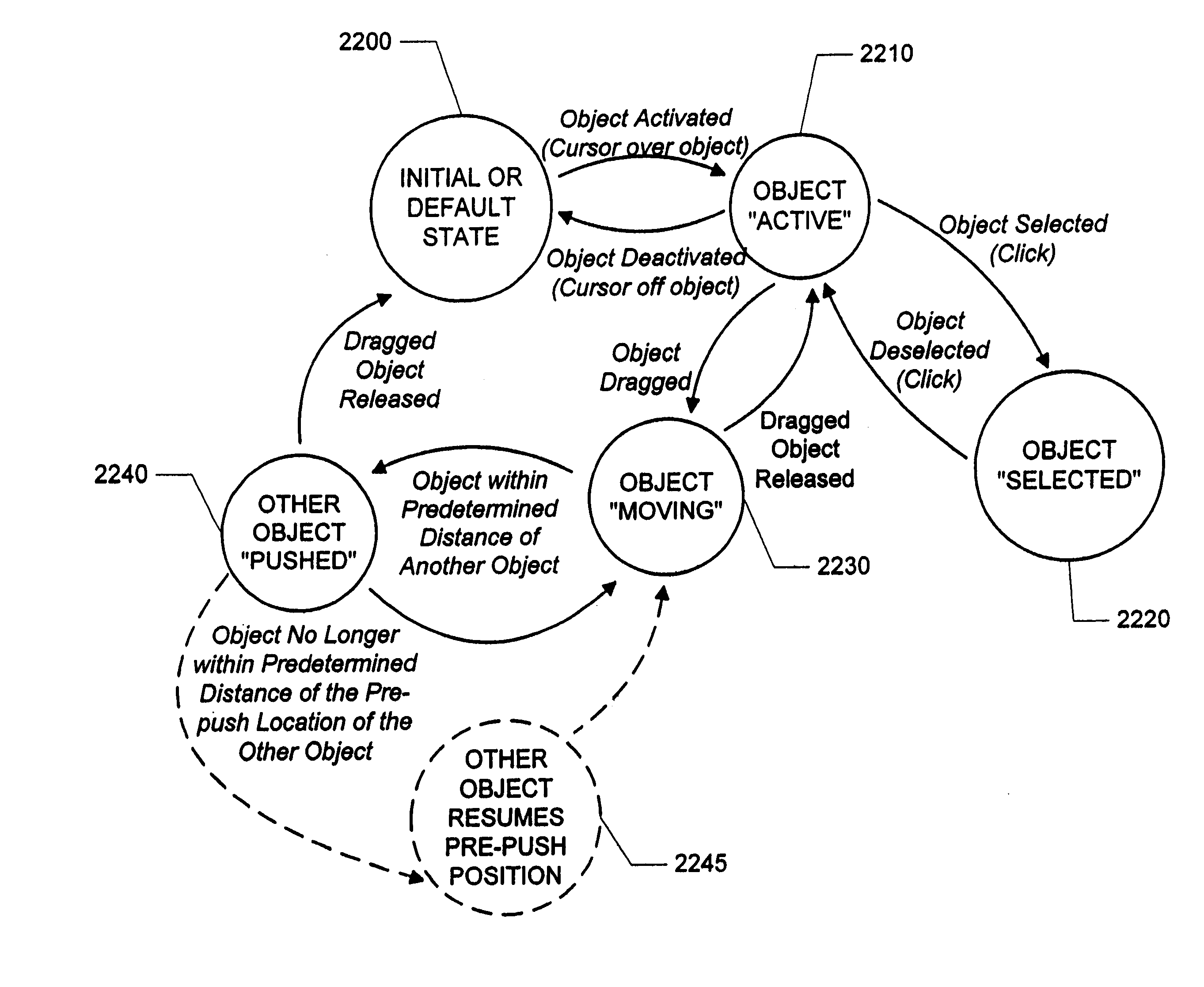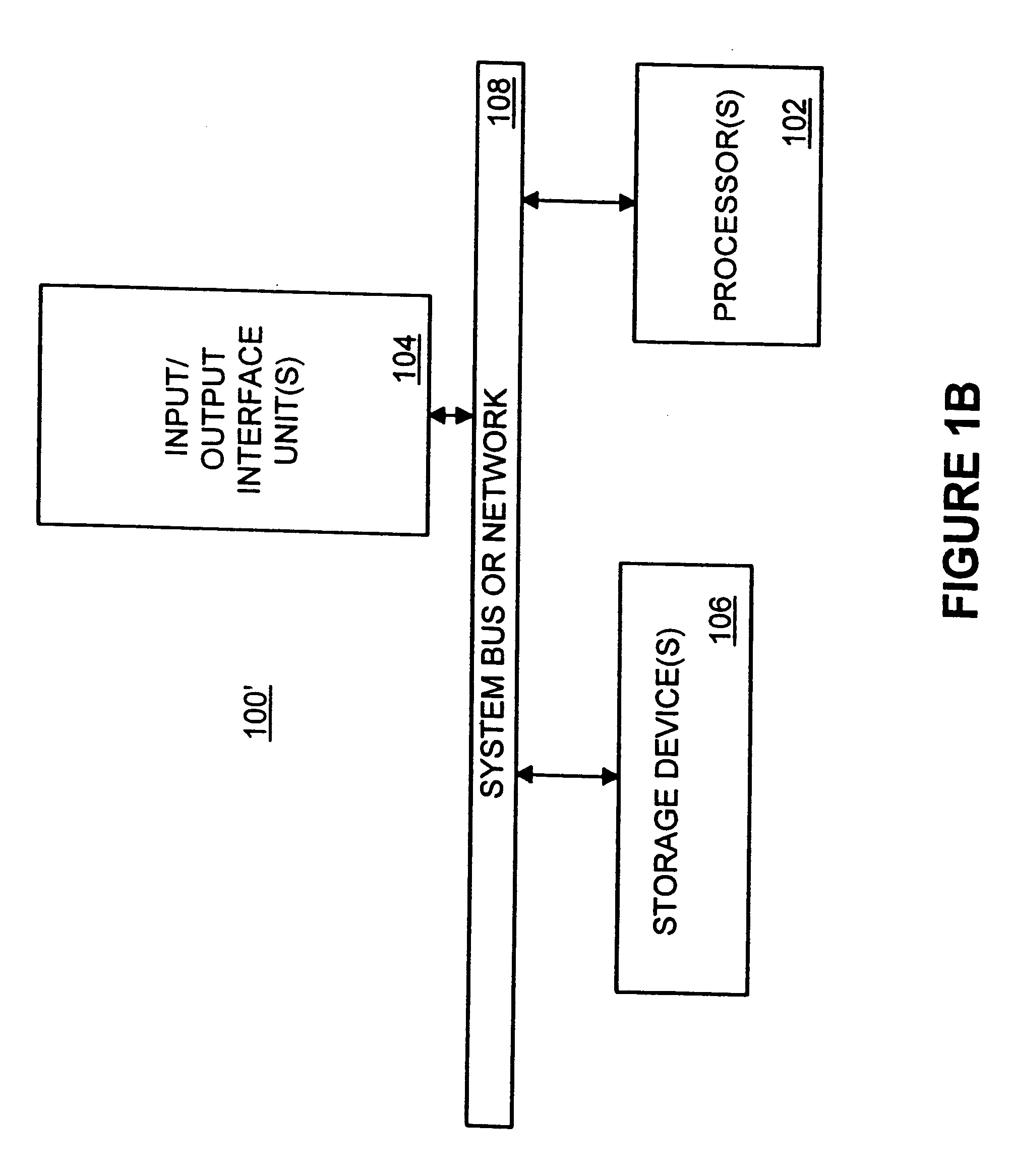Methods, apparatus and data structures for providing a user interface, which exploits spatial memory in three-dimensions, to objects and which visually groups proximally located objects
a user interface and spatial memory technology, applied in the field of objects and user interfaces, can solve the problems of not being able to learn to interact with computers, people would have to invest a fairly substantial amount of time to master effective interaction with computers, and people would often become frustrated when using computers, so as to minimize the number of different types of inputs, enhance the spatial memory of users, and minimize the time needed for users.
- Summary
- Abstract
- Description
- Claims
- Application Information
AI Technical Summary
Benefits of technology
Problems solved by technology
Method used
Image
Examples
Embodiment Construction
The present invention concerns novel methods, apparatus and data structures for providing a user interface. The following description is presented to enable one skilled in the art to make and use the invention and is provided in the context of particular applications and their requirements. Various modifications to the disclosed embodiment will be apparent to those skilled in the art, and the general principles set forth below may be applied to other embodiments and applications. Thus, the present invention is not intended to be limited to the embodiments shown.
Features of, and functions which may be performed by, the present invention, will first be described in .sctn.4.1 below. Then, structures, methodologies, data structures and displays of exemplary embodiments of the present invention will be described in .sctn.4.2 below.
.sctn.4.1 Functions Which May Be Performed By the Present Invention
Recall from .sctn.1.2.3 above, that there exists a need for a user interface, and in particu...
PUM
 Login to View More
Login to View More Abstract
Description
Claims
Application Information
 Login to View More
Login to View More - R&D
- Intellectual Property
- Life Sciences
- Materials
- Tech Scout
- Unparalleled Data Quality
- Higher Quality Content
- 60% Fewer Hallucinations
Browse by: Latest US Patents, China's latest patents, Technical Efficacy Thesaurus, Application Domain, Technology Topic, Popular Technical Reports.
© 2025 PatSnap. All rights reserved.Legal|Privacy policy|Modern Slavery Act Transparency Statement|Sitemap|About US| Contact US: help@patsnap.com



